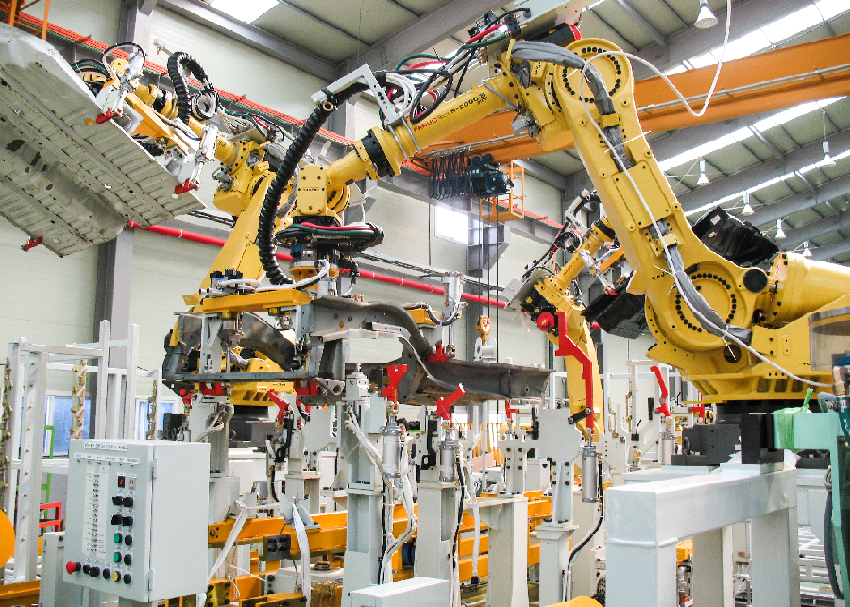
Robohub.org
Integrators are dead, long live the integrator
For many years integrators have engineered, built and installed automation machinery for their manufacturer clients. As manufacturing has begun to move from mass production to mass customization, the integration process has required more flexibility and increasingly used robots as part, if not all, of the solution.
On my recent research trip to Odense, Denmark, the value offered by integration firms was clearly evident in the integrator companies I visited. Each quietly went about helping their manufacturer clients solve production problems by designing, building, testing and installing complete or partial automated manufacturing lines and systems. They all appeared to be having success pains: each had recently moved into larger quarters and were quickly filling the new space, and each was finding it difficult to hire all the technical talent they sought.
What is an integrator?

Instead of robot manufacturers customizing their products for all the applications customers require, they rely instead on distributors and integrators to apply their expertise to help the end user customize their robots to fit their unique needs. The multiple roles integrators play in the growing robotics industry has gone unsung, yet they are an integral part of the robotics distribution channel. There is even an integrator certification program offered by robotics associations around the world.
Each of the Big Four robot manufacturers (KUKA, Fanuc, ABB and Yaskawa Motoman) have hundreds of integrators licensed to work with them in sales, service and support of their robots. There are hundreds more integrators that are hardware agnostic, i.e., they select the robot manufacturer that best solves their customer’s requirements. [The Robot Report’s directory of integrators lists more than 450 integrators and plots them on a global map. If you know of an integrator company not on the list and map, please let us know by emailing tips@therobotreport.com. Thanks.]
Recently, with the advent of plug-and-play collaborative robots and the growing use of newer and more user-friendly methods of training and programming, it was thought by many that integrators would become a dying breed replaced by super capable and easy to install and integrate multi-purpose robots. We’re not there yet, nor, are we likely to be there for many years to come. Hence the title of this article.
Integrators offer specialized engineering and programming services that many manufacturers either don’t have the staff to handle, or don’t want to invest in that level of staff. Integrators come in, help define the problem and solution, and then build and test it. Then they pack it up and move it to the manufacturer’s facility and install and integrate it into their in-house systems. They train the operators and when the system and operators are working successfully, they walk away. Job done.
Odense, Denmark
Odense, Denmark, is a pleasant, suburban-style city with a population of 172,000 and a workforce of around 80,000, on an island (Funen) whose workforce (excluding Odense) approximates 140,000. Robotics have played a significant role in the history of the area but particularly in recent years. The four robotic integrators profiled below – all headquartered in or near Odense – employ around 500 workers.
EGATEC A/S

EGATEC A/S specializes in automated end-of-line packaging and palletizing solutions. Rosborg, Denmark is a nursery that grows and sells miniature flowerpots and spices. Rosborg is one of EGATEC’s clients and the two are working together to automate Rosborg’s end-of-line packaging process – a step that handles 12 million plants per year by hand.
Rosborg is already mechanized. They’ve automated their potting and seeding operations. Plants then are placed on mobile trays slowly moving towards the harvesting stations where fully-grown plants are picked, wrapped and packaged for boxing and palletizing. These latter steps are presently done by hand and are the steps being automated by EGATEC.
EGATEC recently acquired A-One Packaging, a supplier of packaging machines for the food industry, to complement their own end-of-line packing robot cells.
Jorgensen Engineering A/S

Jorgensen Engineering A/S specializes in designing and engineering automation for food processing systems. Baby food; pet food; sacks; cans; powders; even the insertion of a measuring spoon (rightmost photo); etc. The 150-person company installs 50+ robots a year into client food-handling production lines. According to Marketing Manager Jesper Johansen (left and center photos), there has been a significant emphasis on hygiene and a shift toward the use of robotics in their solutions perhaps because of the milk powder scandal in China back in 2008. It was about that time that Jorgensen noticed that clients were insisting on robotic solutions for their food handling production problems and stressing that the solutions needed to be sterile and hygienic.
Integrators such as Jorgensen often have to work around client space limitations. I saw one in-process project at the Jorgensen facility that had a big gap in the work area. When I asked about it I was told that it provided space for an existing post located right in the middle of the new production line.
Gibotech A/S

Gibotech A/S and their Gibocare division, are integrators that specialize in providing automation solutions for the healthcare industry using machines, robots and control systems.
I visited with Mikkel Bjerregaard, the Sales Director (left photo). In the center picture, to help a client sort incoming medicines and samples, they developed a robotic vision, handling and sorting solution with their own special-purpose gripper. In the rightmost picture, they helped a hearing aid manufacturer automate the placement of intricate filters (circled in red) on the tip end of plastic sticks and then place those sticks into containers and those containers into shipping boxes.
Cabinplant A/S

Although I didn’t visit Cabinplant A/S, they are another of the integrator companies located in the Odense area. But this one just sold 80% of their shares to CTB, a Berkshire Hathaway (Warren Buffet) company. CTB designs, manufactures and markets agricultural, dairy and poultry processing equipment but, at the present time, they don’t utilize robots in their products and solutions. Cabinplant, on the other hand, designs, manufacturers and integrates food processing automation that often includes robotic equipment. For example, they make and sell a successful sardine cutting and packing robot cell (ever wonder how those little sardines get packed so neatly crisscrossed in those little cans? Or, who cut off their heads and tails?).
CTB’s chairman and chief executive officer Victor A. Mancinelli said, “The acquisition helps CTB to broaden the range of poultry processing options it can offer its customers as well as expanding into new market areas for processing, such as seafood and vegetables. Cabinplant’s knowledge of the food industry and its innovative approach to product development and implementation fit very well with CTB’s approach to its core markets.”
Reading between the lines, one can see that the investment in Cabinplant, an integrator using the latest technologies, and CTB, an integrator needing those very same technologies, was a strategic move that’s a win-win for both companies. It’s also a win for the Odense robotics community… another success, more millionaires to reinvest their time and money in the community, and more positive notoriety for the area. All that is fodder for another article of the coattail effects on the Danish and Odense robotics clusters.
Stay tuned.
tags: c-Business-Finance, Frank Tobe, The Robot Report



